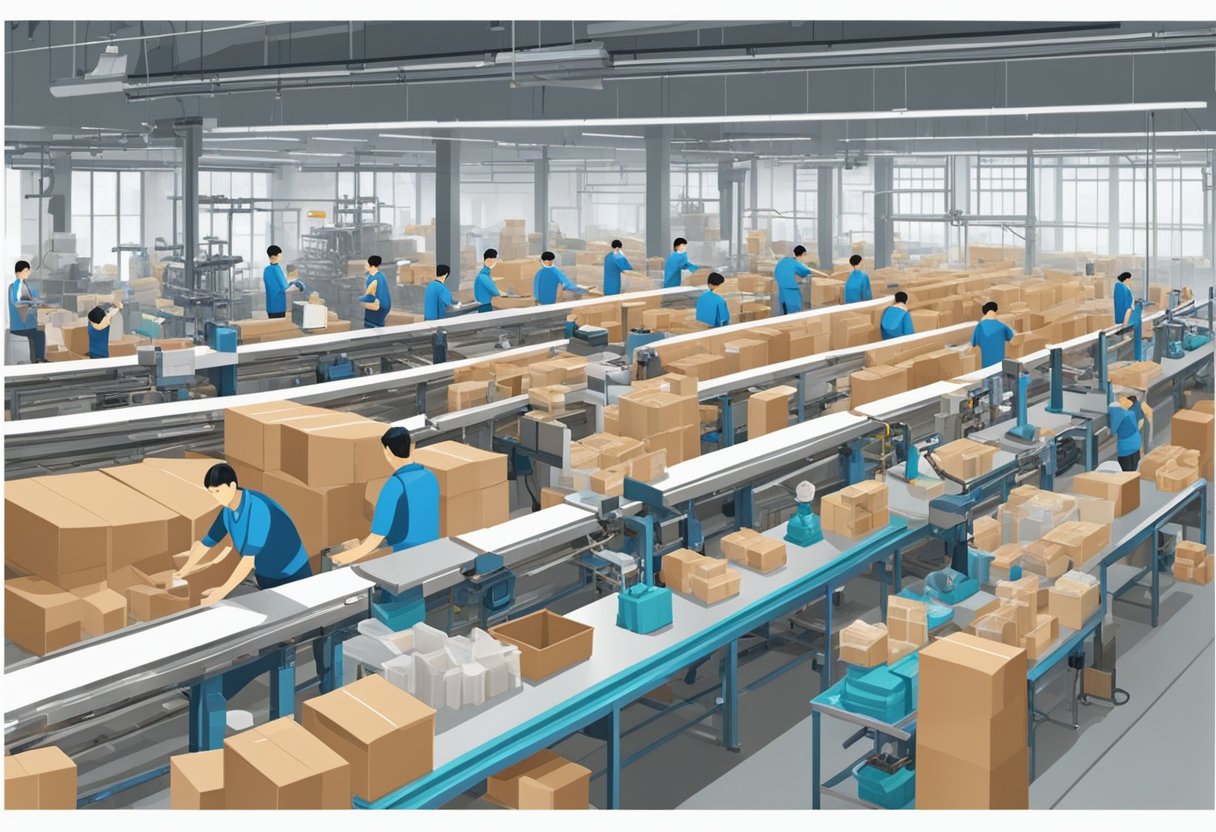Purchasing directly from manufacturers in China offers a strategic advantage for businesses looking to streamline their supply chains and reduce costs. Understanding the market, identifying trustworthy manufacturers, and navigating the complexities of international trade are crucial steps in this process. With a wide range of suppliers and manufacturers, China’s industrial landscape provides a varied platform where one can find almost any product to fit their business needs.
Building a successful partnership with a Chinese manufacturer demands diligence in vetting suppliers, ensuring clear communication, and comprehending the cultural nuances of doing business in China. Staying informed about logistics, customs regulations, and ensuring compliance with both Chinese export laws and the importing country’s regulations is essential. Knowing the ins and outs of the process can lead to a more streamlined purchase and mitigate potential post-sale issues.
Key Takeaways
- Successful direct purchases from China require comprehensive market understanding and partner vetting.
- Clear communication and understanding of trade regulations are critical for smooth logistics and compliance.
- Thorough due diligence and post-purchase considerations are vital for a sustained supplier relationship.
Understanding the Chinese Manufacturing Landscape
 Navigating the Chinese manufacturing landscape necessitates a fundamental knowledge of the key platforms and venues that connect buyers with suppliers, the importance of trade events, and the role of digital marketplaces in sourcing products. This understanding is vital for establishing relationships with trustworthy Chinese manufacturers and optimizing the sourcing process.
Navigating the Chinese manufacturing landscape necessitates a fundamental knowledge of the key platforms and venues that connect buyers with suppliers, the importance of trade events, and the role of digital marketplaces in sourcing products. This understanding is vital for establishing relationships with trustworthy Chinese manufacturers and optimizing the sourcing process.
Key Platforms for Sourcing Products
One of the predominant platforms for sourcing products is Alibaba, a comprehensive marketplace that lists a plethora of manufacturers and suppliers from China. It is designed for international businesses seeking to purchase large quantities of goods. Similarly, Made-in-China and Global Sources are also significant platforms where Chinese factories showcase their products to a global audience. For domestic trade within China, 1688 operates as the Chinese-language counterpart to Alibaba, predominantly used by local businesses. It provides access to an extensive network of Chinese suppliers and manufacturers geared toward the domestic market.
The Role of Trade Shows and Fairs
Trade fairs, such as the renowned Canton Fair, are pivotal in the Chinese manufacturing and export landscape. They offer buyers the opportunity to meet suppliers face-to-face, witness product demonstrations, and establish relationships. Attending these fairs allows buyers to gain first-hand experience with the products and the manufacturing capabilities of Chinese factories.
Directories and Online Marketplaces
Aside from physical trade shows, there are numerous directories and online marketplaces that facilitate the discovery of Chinese suppliers. These directories often provide detailed information on a multitude of manufacturers, including their business scope, product specialties, and credentials. Online platforms such as Global Sources and Made-in-China offer searchable databases, allowing buyers to filter through potential suppliers based on various requirements, thus streamlining the sourcing process.
Establishing Contact and Vetting Suppliers
When buying directly from manufacturers in China, successful business relationships begin with deliberate and informed actions to establish contact with suppliers and conduct thorough due diligence to verify their capabilities and quality standards.
Initial Research and Contact
The initial step in the sourcing process involves comprehensive research to identify potential manufacturers. They should prioritize looking for a verified supplier, as this can reduce risks associated with quality and reliability. After compiling a list, they can reach out through contact forms, emails, or phone calls, providing an opportunity to gauge responsiveness and communication abilities, which are critical for future interactions.
Negotiation and Securing Samples
Negotiation is an essential phase where they articulate their requirements and discuss pricing, minimum order quantities, payment terms, and delivery schedules. Before finalizing any agreement, they should request product samples to assess the quality and ensure it aligns with their expectations. This step also helps them to identify any potential issues that might need addressing before they place a larger order.
Assessing Quality and Production Capabilities
The buyer or a designated sourcing agent must visit the factory premises, either virtually or in person, to carry out a meticulous inspection. It allows them to verify the production capabilities, check on the quality control measures in place, and engage directly with the manufacturer. This due diligence is crucial to ensure that the manufacturer can meet their standards and deliver the desired product quality on a consistent basis.
Logistics and Compliance
Buying directly from a manufacturer in China involves navigating complex logistics and strict compliance regulations. A buyer must be diligent in understanding payment terms, shipping logistics, customs processes, and the necessary standards for legal and product compliance.
Navigating Payment Terms and Shipping
When importing from China, payment terms typically involve a deposit with the balance due upon shipment or receipt of goods. To minimize risk, buyers should negotiate payment terms that provide leverage until the goods are confirmed to be shipped. Shipping options vary, with choices between air freight for speed or sea freight for larger, less time-sensitive orders. Delivery schedules should be clearly defined, and tracking systems put in place to ensure timely arrival of goods.
Customs, Duties, and International Trade
Successful import also requires understanding how to effectively navigate customs clearance processes. Duties and tariffs are an integral part of international trade, and vary depending on product classification and bilateral trade agreements. Cultural differences may also impact negotiation and understanding of such terms. To avoid delays and additional costs, one should ensure that all paperwork is meticulously completed and in full compliance with the importing country’s regulations.
Ensuring Legal and Product Standards Compliance
Lastly, when importing from China, it’s critical to ensure compliance with all relevant legal and product standards. Ensuring legal and product standards compliance often involves third-party inspections and certifications to confirm that products meet the destination country’s regulations. Importers should be especially cautious about regulations related to safety, labeling, and materials used in manufacturing. Compliance with these standards not only protects the importer from legal issues but also ensures customer safety and satisfaction.
Finalizing the Purchase and After-Sale Considerations
Finalizing the purchase with manufacturers in China requires careful attention to payment details and production specifics. After-sales, businesses must maintain healthy supplier relationships and anticipate future needs to enable scalability.
Finalizing Payment and Production
Businesses must select a payment method that balances security with convenience. It’s common to use Telegraphic Transfers (TT) for deposits, with the balance payable upon shipment or after inspection. Letters of credit are also secure but can be complex and costly. As production commences, firms should negotiate clear cost structures and ensure that profit margins are maintained by keeping constant communication with the supplier to avoid unexpected charges.
Managing Long-Term Supplier Relationships
A reliable supplier relationship is crucial for consistent quality and service. Companies should nurture these relationships through regular communication, mutual respect, and by honoring agreements. This ensures profitable sales and helps when negotiating terms like minimum order quantities (MOQ) or dealing with after-sales issues.
Planning for Scalability and Future Orders
For future growth, firms must plan for scaling operations. This involves revisiting and possibly adjusting minimum order quantities to suit demand without overextending on inventory. Businesses should analyze sales and profits to inform cost-effective procurement strategies, ensuring readiness for increased orders over time.
